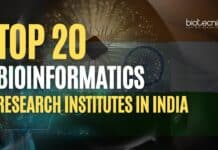We got huge responses for the DO not Skip CSIR NET Topic Series launched a few days ago. CSIR NET Aspirants just loved it. And why not? It makes their Revision simpler & effective. The first topic in our DO not Skip CSIR NET Topic Series was UV-Visible Spectroscopy, and today we will discuss Gene Mapping. Read on to learn about:
- Gene Mapping Types
- Important concepts under gene mapping
- Types of questions asked
- Weightage in exam
- Reference books
- And 👉Download CSIR NET Gene Mapping Mind Map PDF for Quick Revision👈
Introduction
Gene mapping refers to the process of determining the location of genes on chromosomes. As with any type of map, a genetic map must show the positions of distinctive features. These markers are recognizable landscape components in a geographic map, such as rivers, roads, and buildings. What markers can we use in a genetic landscape? Genes were the first markers to be used. But because of many disadvanta
ges of working with genes as markers, DNA markers are being used for mapping.Genomic maps are categorized into two types:
Genetic mapping: is based on genetic techniques to construct maps showing the positions of genes and other sequence features on a genome. Genetic techniques include crossbreeding experiments or, in humans’ case, examining family histories (pedigrees).
Physical mapping: It uses molecular biology techniques to examine DNA molecules directly to construct maps showing the positions of sequence features, including genes.
Today, the most efficient approach for gene mapping involves sequencing a genome and then using computer programs to analyze the sequence to identify the location of genes.
Important concepts from you must study from Gene Mapping:
- Concept of linkage
- Correlation between Recombination Frequency and Gene distance
- Two-point test cross and three-point test cross
- Numerical calculations of distance between the genes, order of the genes, coefficient of coincidence, and interference.
- Tetrad Analysis
- For Physical mapping,
- Concept of deletion mapping and
- Somatic Hybridization
- In situ Hybridization and DNA markers (Can be clubbed with Unit 13)
- Correlation between Linkage/Genetic maps and Physical maps
- For microbial mapping
- Transduction
- Conjugation and Interrupted mating experiment
Type of questions asked from this topic
- Numerical questions based on a Three-point test cross
- Calculation of gene distance from Tetrad analysis
- “Finding the gene order” by deletion mapping
- “Position of gene” determined by Somatic hybridization
- “Construction of gene map” by transduction experiment data or interrupted mating experiment data.
Weightage of this topic in the exam
- Minimum of 10-14 marks.
- Every session, at least 2 Part B and 2 Part C questions are definitely asked about this topic.
Reference book for that topic
- iGenetics by Peter J. Russel
- Concept of Genetics by Klug, Cummings, Spencer, and Palladino
- Genetics: A Conceptual Approach by Benjamin Pierce
- Principles of Genetics by Gardner, Simmons, and Snustad
Download CSIR NET Gene Mapping Mind Map PDF for Quick Revision
CSIR NET Life Science Weekly Practice Test Series – FREE On Biotecnika APP







































